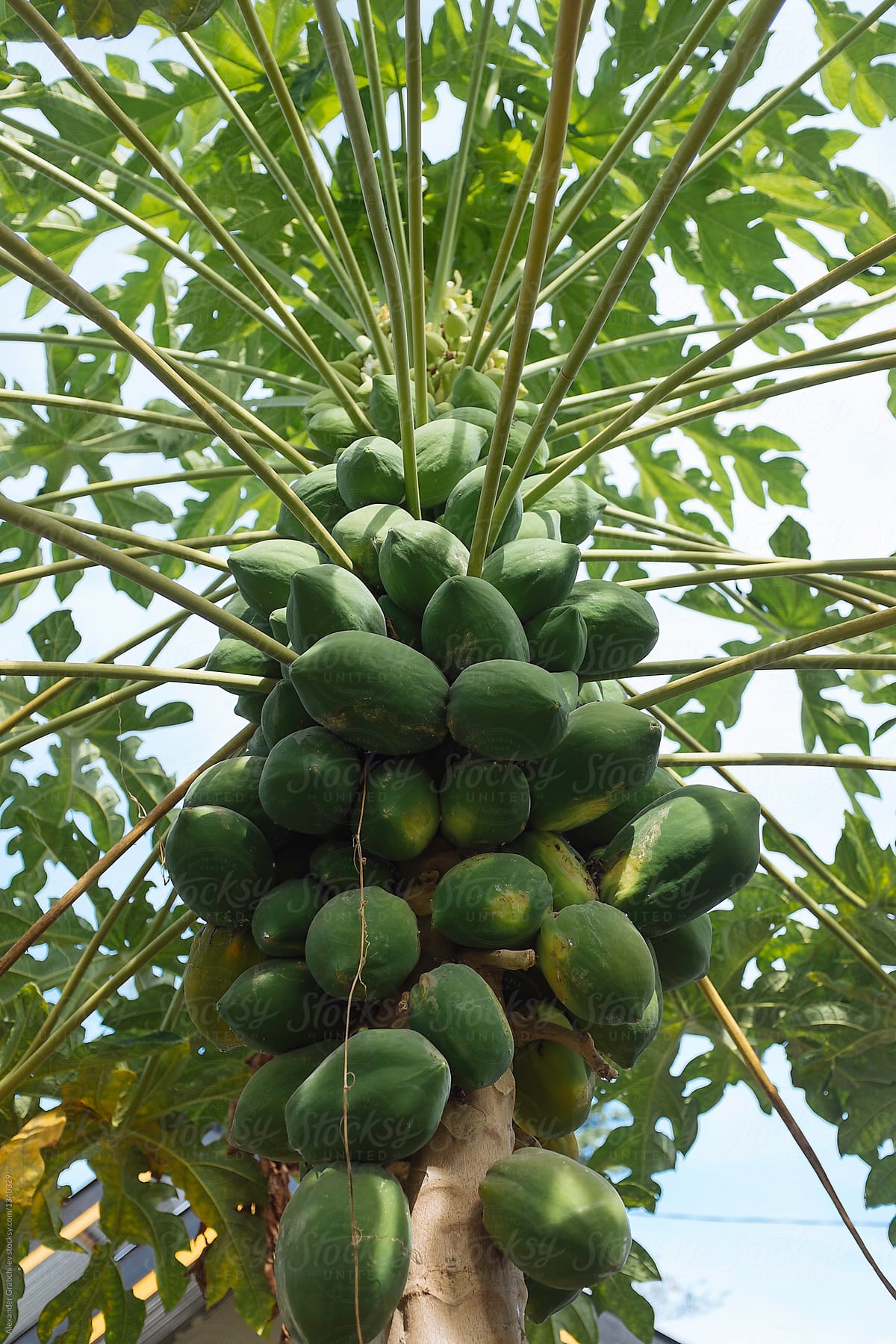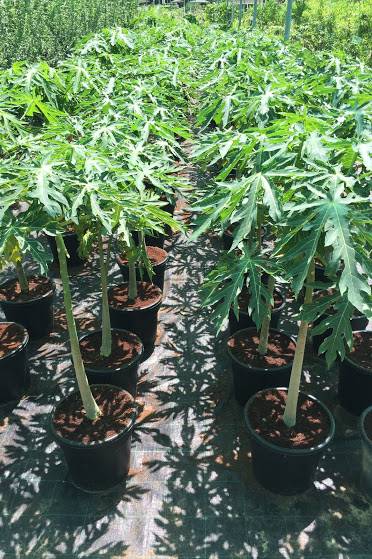Plant Bio
Papaya (Carica papaya) is a tropical fruit-bearing tree known for its sweet and juicy orange flesh. It's widely cultivated in tropical and subtropical regions for its delicious fruits. Here's a description and care guide for cultivating papaya:
Description:
Leaves: Papaya leaves are large, palmate, and deeply lobed, resembling the shape of a hand. The leaves are arranged at the top of the trunk and provide a lush tropical appearance.
Trunk: The trunk of a papaya tree is usually single-stemmed and relatively thin. It can grow up to 10 to 33 feet (3 to 10 meters) in height, depending on the variety and growing conditions.
Flowers: Papaya trees produce large, waxy, and fragrant flowers that are typically white, cream, or pale yellow. Female flowers are usually larger and develop into fruit.
Fruits: Papaya fruits are oblong or pear-shaped with smooth, thin skin that can be green, yellow, or orange when ripe. The flesh is usually orange or pink and has a sweet, tropical flavor.
Growth Habit: Papaya trees have a relatively fast growth rate, and they are typically short-lived perennials. They are dioecious, which means individual trees are either male or female. Female trees produce the fruit, while male trees produce pollen for pollination.
Care:
Sunlight: Papayas thrive in full sun. They require at least 6 to 8 hours of direct sunlight daily to produce healthy growth and abundant fruit. Plant them in a location with maximum sunlight exposure.
Climate: Papayas are tropical plants and require warm temperatures to grow well. They are sensitive to frost and cold temperatures. Ideal temperatures range between 75°F and 90°F (24°C to 32°C).
Soil: Papayas prefer well-draining soil that is rich in organic matter. Sandy or loamy soil with good water retention is suitable. The pH level should be slightly acidic to neutral, ranging from 5.5 to 7.0.
Watering: Provide regular and consistent watering to keep the soil consistently moist, especially during the flowering and fruiting periods. Papayas have shallow root systems, so they are sensitive to drought stress. Avoid waterlogged conditions, as they can lead to root rot.
Fertilization: Papaya trees benefit from regular fertilization. Use a balanced fertilizer with higher potassium content to promote fruit development. Apply the fertilizer every 2 to 3 months during the growing season, following the package instructions.
Pruning: Prune papaya trees as needed to remove dead, damaged, or overcrowded branches. This helps improve air circulation and sunlight penetration, leading to healthier growth and better fruit production.
Pest and Disease Management: Papayas can be susceptible to pests like aphids, mealybugs, and fruit flies. Inspect the leaves, flowers, and fruits regularly for signs of infestation. Address pest issues with appropriate organic treatments or insecticidal soaps. Watch out for fungal diseases as well.
Mulching: Apply a layer of organic mulch around the base of the tree to help retain moisture, suppress weed growth, and maintain an even soil temperature.
Harvesting: Papayas are typically harvested when the fruits reach their desired size and color. The skin should be slightly soft to the touch. Use a knife or pruning shears to cut the fruit from the tree, leaving a small portion of the stem attached.
Papaya trees can be a rewarding addition to your garden, offering not only delicious fruit but also a tropical ambiance. With proper care, including sunlight, watering, fertilization, and pest management, your papaya tree can thrive and provide you with an abundant harvest of sweet and flavorful papayas.










